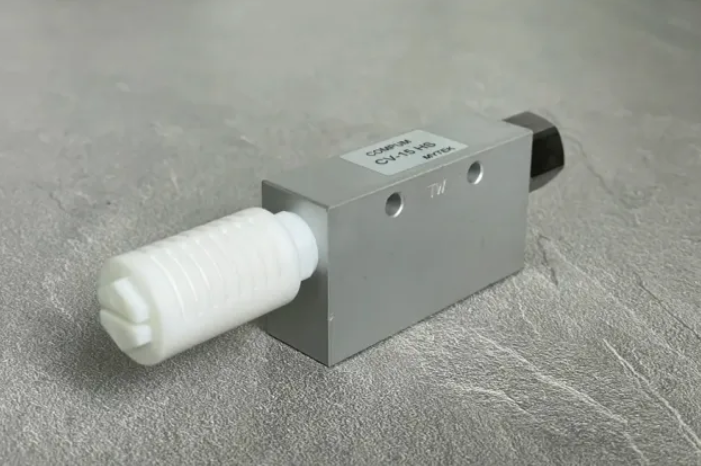Types and Applications of Vacuum Ejectors

Understanding the different types and applications of vacuum ejectors is essential for optimizing performance in various industrial and automation processes. These devices play a crucial role in creating vacuum pressure for tasks such as material handling, packaging, and pick-and-place operations. In this article, we’ll explore how different types of vacuum ejectors work and how to select the right one based on your application needs to improve efficiency and productivity.
What Are Vacuum Ejectors?
Vacuum ejectors are devices that create suction without using moving parts. They use high-pressure fluid, such as compressed air or steam, which speeds through a nozzle. This increase in speed lowers the pressure, creating a vacuum that can draw in air or gas.
They are compact, low-maintenance, and quick to respond, making them ideal for industrial, laboratory, and automated systems where reliable vacuum is essential. However, they need a continuous supply of motive fluid and can only reach a limited maximum vacuum.
How Vacuum Ejectors Work
Vacuum ejectors operate using the Venturi effect, which converts pressure energy into velocity to create suction. Here’s how the process works step by step:
- Motive Fluid Entry: High-pressure air, steam, or gas enters the ejector through an inlet and is directed into a narrow nozzle. This setup increases the fluid’s speed and prepares it to generate a low-pressure zone for suction.
- Pressure Drop: As the motive fluid passes through the narrow nozzle, it accelerates to a very high speed. This pressure drop creates a low-pressure zone that helps pull in air or gas from the surrounding area.
- Suction: This low-pressure area pulls in surrounding air or gas through the suction port.
- Mixing: Inside the ejector, the high-speed motive fluid combines with the drawn-in air or gas. This mixing process transfers energy from the motive fluid to the suctioned gases, helping push them toward the exit.
- Diffusion and Discharge: The mixed flow passes through a diffuser, where the speed decreases and pressure partially recovers before being released to the outlet.
This simple but effective process allows vacuum ejectors to provide quick, reliable suction without moving parts, making them durable, low-maintenance, and ideal for a wide range of applications.
Types and Applications of Vacuum Ejectors
Vacuum ejectors create a vacuum efficiently without moving parts, making them reliable, simple, and low-maintenance. There are two main types: air ejectors and steam ejectors, each suited for different needs.
- Air Ejectors
Air ejectors use compressed air to create a vacuum. Air flows through a narrow nozzle, speeds up, and creates suction. This suction can then lift, hold, or move objects in different applications.
How It Works: Compressed air speeds up through a nozzle, lowering pressure to draw in surrounding air or gas. The mixed flow passes through a diffuser, where pressure is partially recovered before release.
Applications:
- Packaging Machines: Air ejectors create a vacuum quickly to seal products or form packaging materials. This ensures products are securely packaged and production runs efficiently.
- Robotic Pick-and-Place Systems: Air ejectors provide fast, reliable suction for accurate and efficient robotic handling in automation.
- Laboratories: Air ejectors provide a clean, oil-free vacuum for experiments and sensitive equipment.
- Steam Ejectors
Devices that create a vacuum using high-pressure steam. The steam accelerates through a nozzle, lowering pressure and drawing in surrounding gases or vapors. They are ideal for high-temperature, heavy-duty, or corrosive industrial applications.
How It Works: Steam expands through a nozzle, increasing its speed and reducing its pressure to pull in gases or vapors. The mixture passes through a diffuser, restoring pressure before discharge.
Applications:
- Chemical Plants: Used for processes like distillation, drying, and evaporation that require a reliable vacuum.
- Power Generation: Maintain a vacuum in steam turbine condensers to improve efficiency.
- Petrochemical Industries: Provide continuous, heavy-duty vacuum for large-scale processing operations.
See also: English Sikho: Best Apps and Techniques to Improve Fluency
Selecting the Right Type of Vacuum System
Choosing the right vacuum system depends on your application’s specific needs. Here’s how to decide:
- Vacuum Level Requirements
The first step is to understand how much vacuum your application needs:
- Vacuum pumps are ideal for applications that need a strong and steady vacuum, such as chemical processing, vacuum forming, or laboratory experiments. They provide reliable suction over long periods.
- Vacuum ejectors are perfect for applications requiring moderate vacuum levels and quick response, such as automated machines, packaging lines, and pick-and-place systems.
- Blowers provide low vacuum or gentle suction, suitable for continuous airflow applications like drying, aeration, or conveying lightweight materials.
Choosing the correct vacuum level ensures your process runs efficiently and the equipment performs as intended.
- Energy Efficiency
Energy use plays a major role in long-term operating costs:
- Vacuum pumps are generally more energy-efficient for continuous operations because they use mechanical power and maintain a vacuum with less energy loss.
- Ejectors, on the other hand, consume compressed air continuously, which can increase energy costs if used for extended periods. However, for short, frequent cycles, they can still be economical.
- Blowers are also efficient for low-pressure, high-volume air movement, making them a good choice for continuously running processes with low suction requirements.
- Maintenance Needs
Consider how much maintenance time and cost you can manage:
- Ejectors don’t have moving parts, so they require very little maintenance. Always keep the air supply clean and dry, and routinely check for any clogs or blockages to ensure reliable operation.
- Vacuum pumps and blowers have mechanical components that wear over time, requiring regular inspection, oil changes, and filter replacements.
Choosing a system that matches your maintenance capacity prevents unexpected downtime and extends equipment life.
- Operational Environment
The conditions in which the vacuum system operates affect its performance and lifespan:
- Ejectors perform best in clean and controlled environments, such as labs or automated production lines.
- Pumps and blowers are more robust and can handle dust, moisture, and other harsh conditions, making them suitable for industrial or outdoor use.
Selecting the right type for your environment ensures consistent performance and reduces wear.
- Response Time
If your system needs a vacuum right away, how fast it reaches that vacuum level is very important:
- Ejectors are excellent for generating a vacuum instantly because they begin operating as soon as air is supplied.
- Pumps and blowers are best for continuous processes, as they take longer to reach the desired vacuum.
Use pumps for strong suction, ejectors for fast small tasks, and blowers for steady low-pressure airflow.
Selecting the right system for your needs ensures better efficiency, reliable performance, and lower operating costs.
Conclusion: Vacuum Ejectors
Vacuum ejectors are simple, reliable, and low-maintenance devices that generate suction without moving parts. Using high-pressure fluids like compressed air or steam, they convert pressure into velocity to create a vacuum efficiently and quickly. Their compact design and fast response make them ideal for automation, packaging, pick-and-place systems, laboratories, and other applications where dependable vacuum is needed.
There are two main kinds of vacuum ejectors: air ejectors, which are great for quick, small, and clean jobs, and steam ejectors, which handle tough, high-heat, or corrosive industrial work. Choose a vacuum system based on suction strength, energy use, maintenance, environment, and response time to ensure reliable operation.






